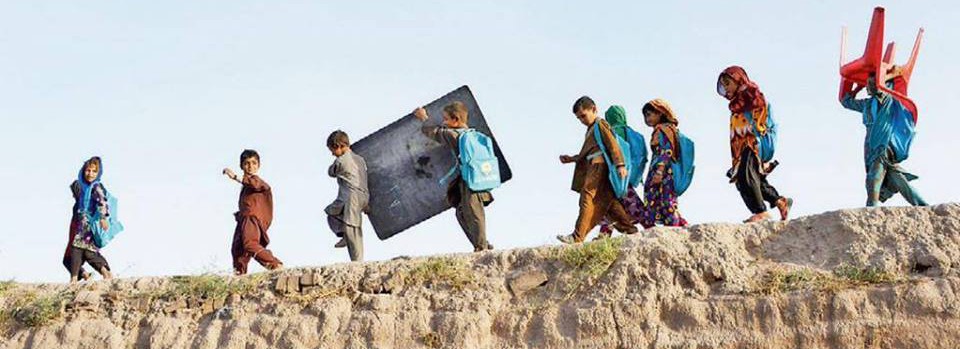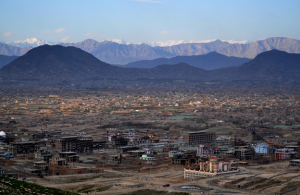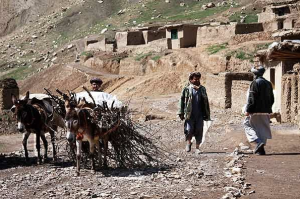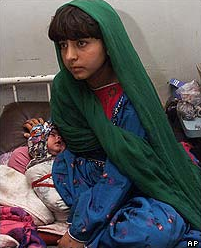Urban Vs. Rural
It is important to note the differences between urban and rural areas, especially in relation to the experiences of female youth, to understand what is currently happening with Afghan youth. Currently, most of the Afghan economy is based upon agriculture in which over 78% of the population participates (Central Intelligence Agency, 2014). However, due to the higher rates of unemployment in rural areas many Afghans have begun moving into cities to improve their financial prospects. Urbanization has spread quickly throughout Afghanistan in recent years, growing at 4.7% (Gaan, 2015). As of 2014, 26.3% of the Afghan population lived in a city (Central Intelligence Agency, 2014). Most of the youth who left rural areas for urban ones did so in hopes of finding employment, but the influx of new potential employees saturated much of the markets, creating limited options in cities, especially since many of the rural youth are less likely to be educated or to be able to read and therefore would not be qualified for the more lucrative jobs. These youth are left without a source of income and are far removed from their previous social support network, driving many to illicit activities (Gaan, 2015).
Unemployment rates differ between cities, 29%, and rural areas, 35%, which leads to higher instability in less urban areas. Research suggests a link between poverty and increased instances of violence within families, implying that while unemployment, and therefore poverty rates, are high in both areas, violent responses due to frustration at low economic status are more likely to occur in rural parts of Afghanistan.
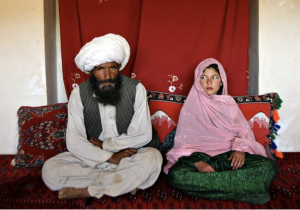
Child marriage in Damarda Village between Ghulam (age 11) and Faiz (age 40). Credit – Stephanie Sinclair for nbcnews.com
The experiences of Afghan female youth vary widely depending on whether they are in an urban or a rural district. Girls living in rural areas are more likely experience a child marriage, wherein a much younger girl, many who are not yet teenagers, are forced to marry a much older man (Office of the Deputy Ministry of Youth Affairs, 2013). Marriages often viewed as a way to establish relationships with other families, end feuds, and increase wealth or social status (Moghadam, 1997). These girls are then sent to their husband’s homes where they are at an increased risk of abuse at the hands of their husband and his family (Office of the Deputy Ministry of Youth Affairs, 2013). These young women are then at risk of becoming pregnant before their bodies are able to handle the strain of pregnancy and childbirth (Office of the Deputy Ministry of Youth Affairs, 2013).
In Afghanistan 9% of all births are adolescent births, which mean that the mother is younger than 18 years old. Of those adolescent births, 12% end in fatal complications and are most likely to occur in rural, conservative areas (Office of the Deputy Ministry of Youth Affairs, 2013). Two-thirds of all births are carried out at home without the assistance of a midwife, doctor, or similarly trained medical practitioner, which accounts for the large percentage of maternal and infant fatalities. Afghanistan’s maternal mortality is 22nd in the world with 460 deaths per 100,000 live births. Its infant mortality rate is the highest in the world at 117 deaths per 1,000 live births, or slightly over one death per ever ten children. As a whole, Afghanistan lacks the medical infrastructure needed to address the needs of its citizens, but these issues are compounded in impoverished, rural communities (Central Intelligence Agency, 2014; Gaan, 2015). As young women enter into marriages, sometimes by force, their future educational prospects are removed from their hands and given to their husband and his family. Should a husband support his wife’s education, she may be able to continue her studies and potentially gain employment outside of the home. However, if her husband or her in-laws decide that education is inappropriate or unnecessary, the wife’s education will cease, regardless of her own academic aspirations. In general, women who are educated are able to better assert their own autonomy and are more capable of deciding their own futures in terms of marriage and further education; whereas women who are illiterate are more likely to simply accept their family’s decisions without challenge.
